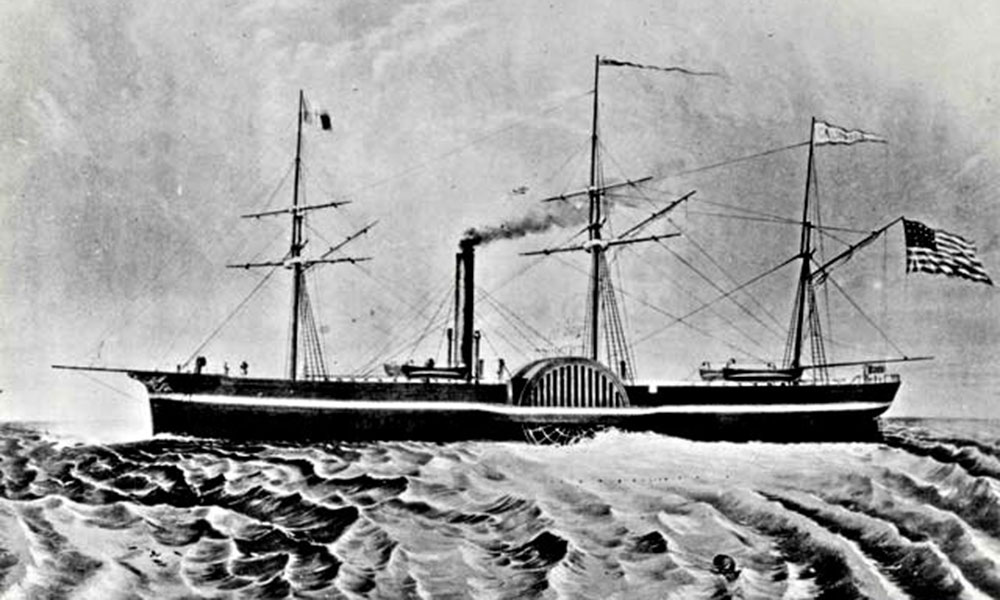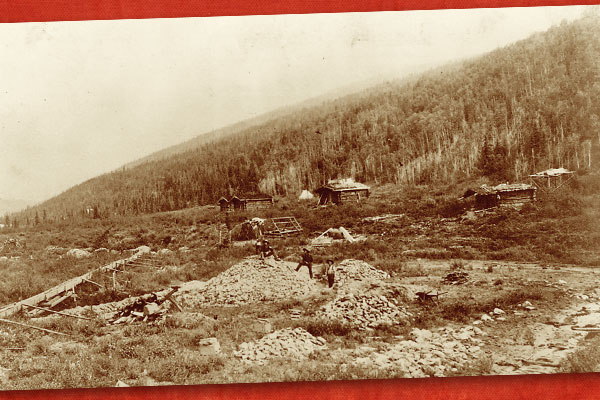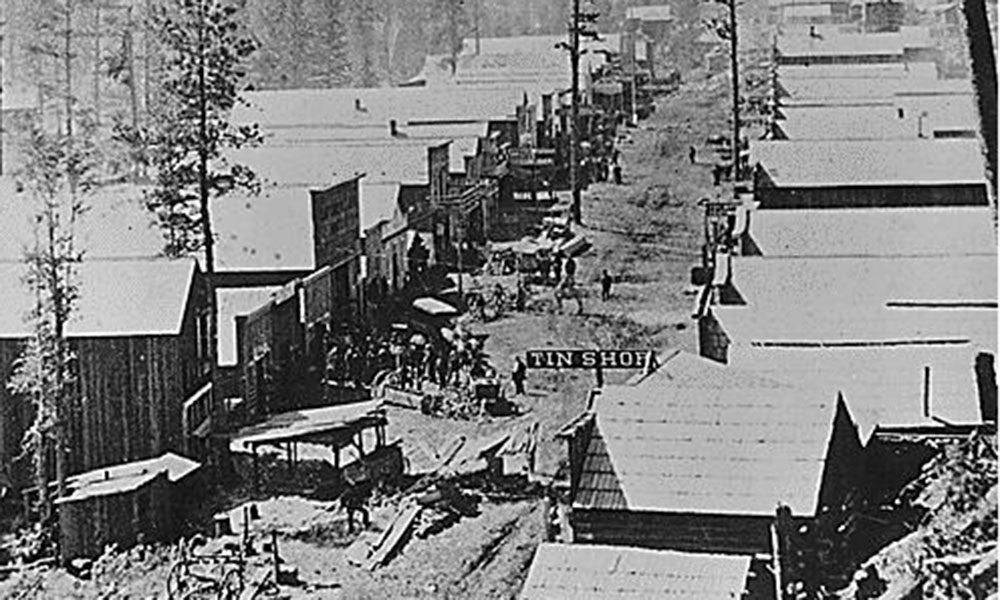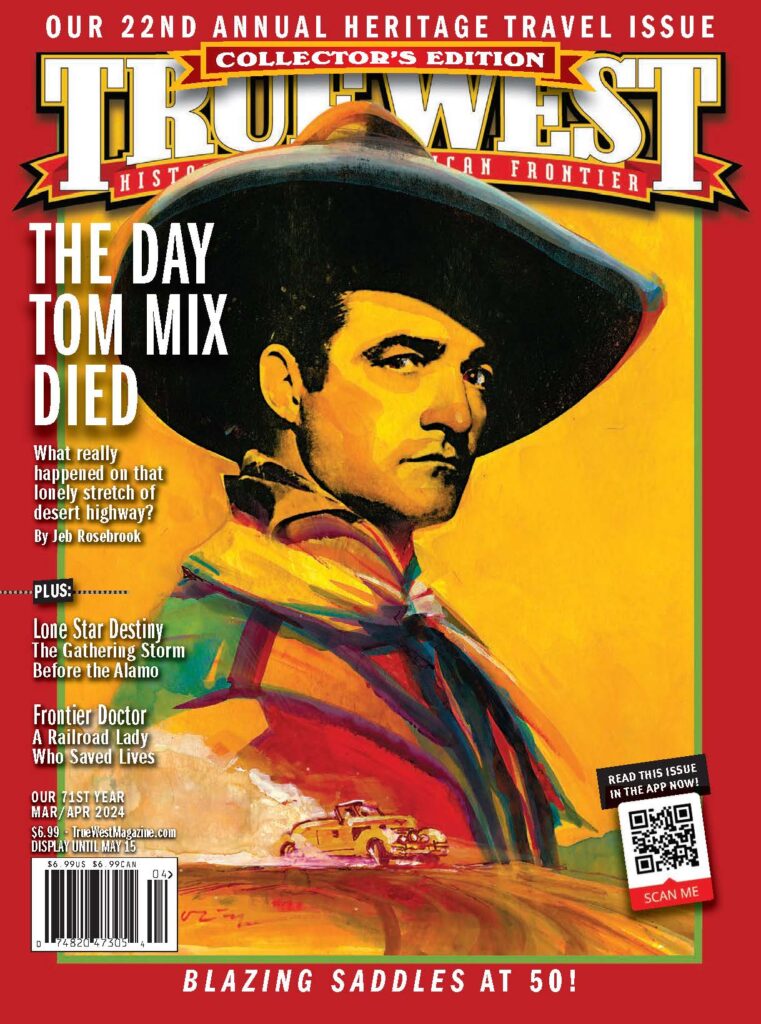Explore the state’s historic region through three great railroad adventures.
A visit to quaint Jamestown will tickle your fancy not only because of its gold-mining history, casinos, antique stores, haunted hotels and award-winning vineyards, but the real gem is the Heritage of Engines in Railtown 1897 State Historic Park. Nestled near Yosemite National Park, it showcases a roundhouse containing engines used in the building of the West.

Railtown 1897 State Historic Park
Jamestown, California
Courtesy Railtown 1897 State Historic Park & California State Railroad Museum Foundation
The Machine Shop opened in 1897 and operated for the first 10 years powered by a water wheel that ran the equipment. It made parts, and the machines were belt-driven while local teenagers were hired to oil the belts.
It is purported that these locomotives have seemed almost human with their breath-like qualities. The engines let the trained ear know how hard they’re working, what they need as they hum along, and when they require service.
Each has a story to tell. For instance, #2, the “Shay” engine had an off-centered boiler because it has all gears that operate the engine. Weighing in at 102 tons, it has a speed of 15 miles per hour tops and uses 20 gallons of oil per mile.
Having a vital role as an ambulance between 1919 and 1923, #8 is a 1925 Model “T” converted to a Paymaster car, and #19 was used for the Hetch Hetchy Dam project.
Built in 1902, #6 is a first-class coach that has 36 velvet seats, a wood stove for warmth and a bathroom for comfort. It was featured in High Noon with Grace Kelly and Gary Cooper.
#33 has been in service for over 100 years. A coal-burning engine converted to oil is known as the “Movie Queen.” She’s survived three derailments and is currently undergoing a mandatory 15-year boiler inspection.
Bound for Glory, or #34, is a 2-8-2 steam engine, and what’s interesting about #5 is its length. Known as a “Shorty Car,” it’s half the length of a regular train car and was used to navigate the curves going to Angel’s Camp. A wooden train, it carried half passengers and half baggage.
The Sierra Railway has had Hollywood call over 200 times for many of these trains to be included in their motion pictures, commercials and television productions. It earned the nickname, “The Movie Railroad.” Viewers will see some of these trains in Unforgiven, Pale Rider and Back to the Future III. Television enthusiasts may have noticed the iron beauties in Death Valley Days, Rawhide and Petticoat Junction.
On certain days, train rides are available for those interested in experiencing a bit of the past firsthand. The gift shop has conductor hats and wooden train whistles for the young and young at heart.
Nearby interests include Sonora, “Queen of the Southern Mines.” Logging trucks are often seen going down the main street of town, Washington Street. It has a bookstore with an interior creek, and there’s an old-fashioned candy store with burnished copper-clad front doors, a bank vault and antique mailboxes containing sweets. There’s also an establishment for one-stop shopping selling guns, ammo, beer and fishing licenses.
The shenanigans and escapades of the characters who traveled Highway 49, the Golden Chain Highway, in the late 1800s inspired writers to pen works including Mark Twain’s The Celebrated Jumping Frog of Calaveras County and Bret Harte’s The Luck of Roaring Camp.
A side trip to Columbia offers an idea of what the town looked like a century and a half ago. Stagecoach tickets can be purchased, and one weekend a year docents dress in period costumes for a realistic encounter.
Don’t miss a chance to tour the Calaveras Big Trees State Park located 31 miles off Highway 49 to the east on Highway 4. The park offers serene paths for walking through the luscious canopy of intermingled ponderosa pines, mountain dogwood, incense cedars, white fir and sugar pines. Dwarfing them all are the giant sequoias.
Highway 49 to Interstate 80 will lead to two other noteworthy railroad museums situated in Truckee to the east and Sacramento to the west.
Good Eats and Sleeps – Jamestown
Eats: National Hotel, Jamestown; Gus’s Steak House, Sonora; Jamestown Hotel, Jamestown; Emberz Woodfired Food, Sonora; Diamondback Grill, Sonora; Cover’s Bakery and Deli, Tuolumne; Columbia Kate’s Teahouse, Columbia
Sleeps: The Jamestown Hotel, Jamestown; National Hotel, Jamestown; Sonora Inn, Sonora; The Inn on Knowles Hill Bed & Breakfast Hotel, Sonora; Bradford Place Inn, Sonora; Best Western Plus Sonora Oaks Hotel & Conference Center, Sonora; Hotel Lumberjack, Sonora
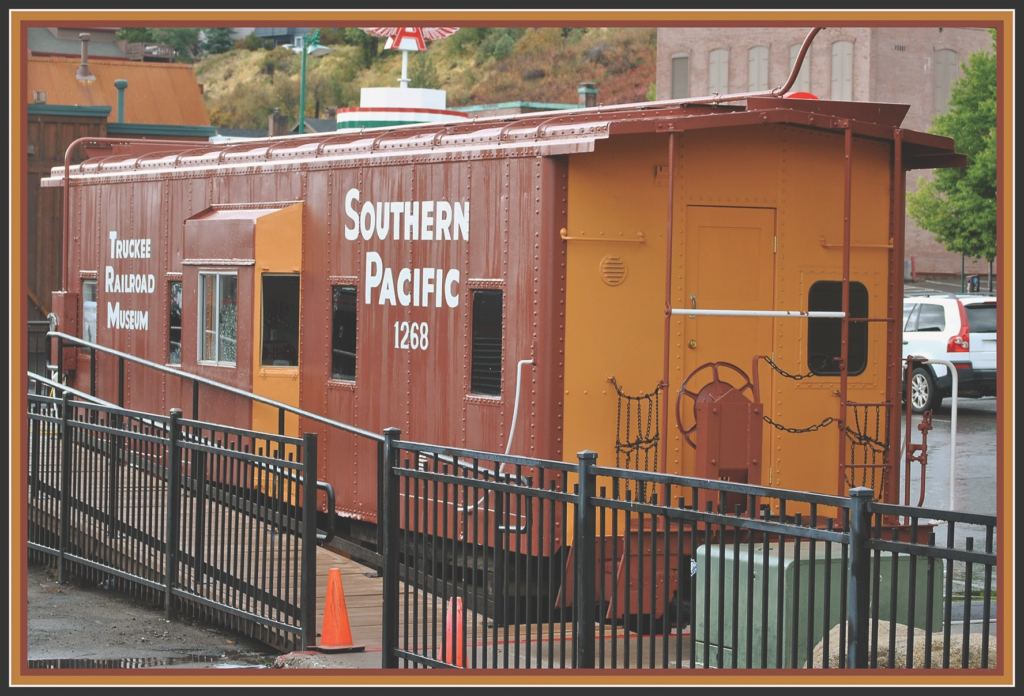
Truckee, California
Courtesy Truckee Railroad Museum
Truckee
The Truckee Railroad Museum is in the center of the Historic Downtown District. It’s a small museum, with a lot of heart—so much so that it is currently 100 percent volunteer-run, and the docents are continually striving to expand. In the works are plans for a small-scale model of the Truckee railroad.
Museum-goers learn that the Truckee area was one of the first to introduce nitroglycerin for blasting through granite. Early on, the engines at Truckee became important. When other engines needed assistance over the steep mountains, they were there to lend a hand. Currently, the “Snow Fighters” play a key role in removing snow from the tracks in the winter.
The Transcontinental Railroad made it possible for logging and lumber to become a major industry in the area. Engineers working these routes often have a view of the beautiful Truckee River.
History abounds with a short walk to The Old Truckee Jail Museum. The jail was active from 1875 until 1964. Showing the unusual usefulness of the railroad, narrow-gauge rails were used to hold up the jail ceiling.
The Museum of Truckee History gives the public an opportunity to use nine interactive touchscreen displays. Learn about the history of ice harvesting, ice houses and even Boca Beer, the first lager in California. The product was shipped by railway for speedy delivery to thirsty customers.
Exploring Historic Donner Pass Summit Tunnel Hike is an option for those interested in hiking. One of the special features of this abandoned railroad tunnel is it affords the hiker a unique perspective and the ambiance of railroad history.
Three miles down Interstate 80 is Donner Memorial State Park and Emigrant Trail Museum. The winter of 1846 had the Donner Party following manifest destiny to California. Stranded by early and heavy snowfall, the group was soon in dire straits. Due to exhausted food rations, a few of the individuals supposedly resorted to cannibalism of some deceased in a last-ditch effort to stay alive. Visitors can see where 16 members of the group were able to endure the arduous winter in the Murphy cabin and survive.
The museum also has exhibits explaining the building of the railroad over the mountains highlighting the Chinese workers.
A must-see is an 18-mile trip from Truckee on CA 89 S to pristine Lake Tahoe. The nickname “Lake of the Sky” is due to the lake’s elevation of 6,225 feet above sea level. The indigo, turquoise-colored lake is one of the purest in the world, giving the water a crystal-clean appearance. One of the deepest lakes in North America, it reaches a depth of 1,645 feet with 75 miles of shoreline. As winter snow melts, much of the lake water comes from the towering mountains. While the tributaries make their way to the lake, they pick up a modicum of warmth. Beachgoers don’t seem to mind the temperature as they swim, paddleboard and kayak.
A nice way to end the day back at Truckee is a visit to Jax Truckee Diner or Jax at the Tracks Diner. Retired and facing the wrecking ball, the 1948 Pullman dining car was pulled from the outskirts of Philadelphia. The repurposed train car had gone from the smell of industry to the aroma of cuisine, and patrons are grateful.
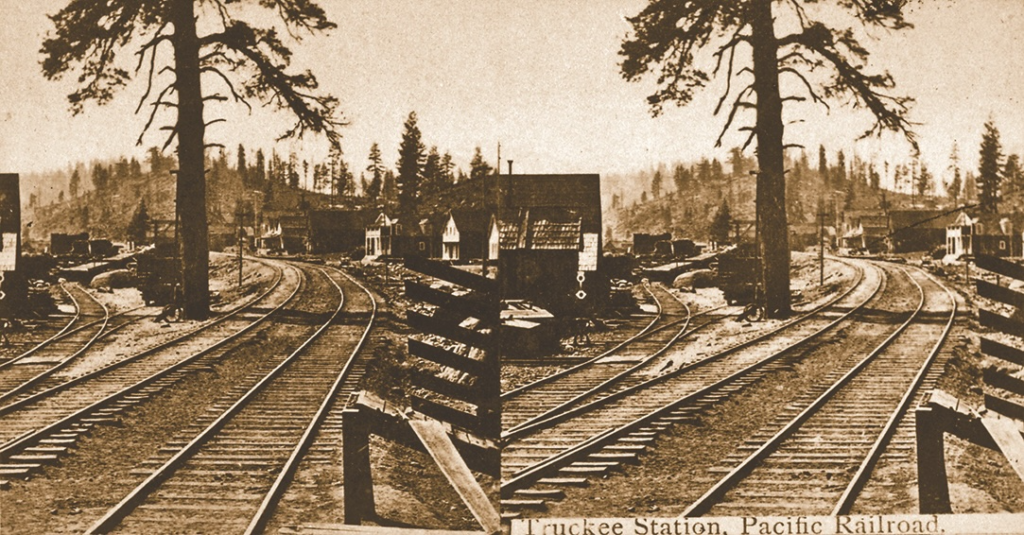
Truckee, California, 1880
Courtesy NYPL Digital Collection
Sacramento
California State Railroad Museum in downtown Sacramento can only be described as epic. The National Landmark in Old Sacramento State Historic Park offers something for everyone.
Before entering the building where the trains are located, guests step back in history to see the realistic passenger station and original freight depot constructed in the 1860s. Situated on the Sacramento River, the freight depot was used for the interchange
of goods not only by railroad and wagon but also riverboat.
Once inside the railroad museum building, visitors view a movie of the history of what they are about to see. And then the doors open…the sights within the museum are a wonder to behold.
“Done.” The word was telegraphed on May 10, 1869, as the Golden Spike was driven into the rails commemorating the joining of the transcontinental railroad. Built in part by former Confederates and Yankees, they worked together, symbolically joining The Union east and west. The Golden Spike is now housed at this museum.
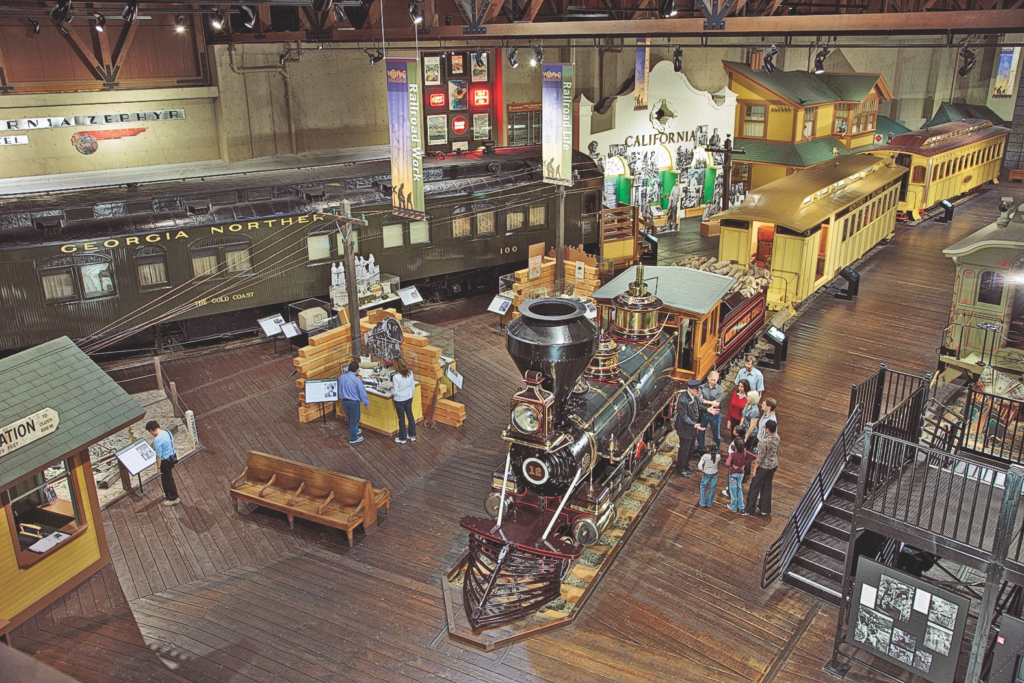
California State Railroad Museum
Courtesy California State Railroad Museum, Sacramento
Farm-To-Fork explores the importance of refrigerated cars used to transport California’s rich agricultural gifts of produce and fruit promptly to markets not only regionally, but also nationally.
The Chinese Railroad Workers’ Experience introduces the workers that helped build the western part of our nation’s first transcontinental railroad.
The museum has eight of only 45 full-size steam locomotives built prior to 1880. The locomotive collection here is extensive, however not all are on display at the same time.
The engines range in dimensions from small to the million-pound Southern Pacific (articulated) cab-forward No. 4294.
On display in a massive building are not only engines, but diner cars, passenger cars and sleeping cars. Cabooses, or “Home away from home” for trainmen between shifts, are here as well.
Toy trains? This museum has approximately 1,000 vintage Lionel, Marklin and Buddy L featured in a 3,300-square-foot exhibit. In addition, the museum has partnered with the National Model Railroad Association and offers a large display of model layouts and trains to scale. Both exhibits are magical as they seem to, for a moment, almost transport us back to childhood.
Two and a half miles from the California State Railroad Museum is Sutter’s Fort State Historic Park. For those interested in the history of the gold rush and trails westward, it’s worth seeing.
For many immigrants, the waystation called Sutter’s Fort was the end of the California Trail. The first Sutter’s Fort was abandoned when in 1848 gold was discovered at Sutter’s Mill. This one event triggered the beginning of the California Gold Rush.
Sutter’s Fort was saved from demolition by the Native Sons of the Golden West. It’s now an educational center with historical reenactments like “Hands on History” that feature interactive exhibits and demonstrations such as blacksmithing and panning for gold.
East on Highway 50 is Placerville. The railroad was opened here in 1888 to haul food and lumber to Sacramento, and until the 1940s, went up and down the line serving passengers.
El Dorado Western Railroad offers rides on Vintage Inspection Cars boarding from El Dorado. When planning a trip, be mindful of the limited schedule.
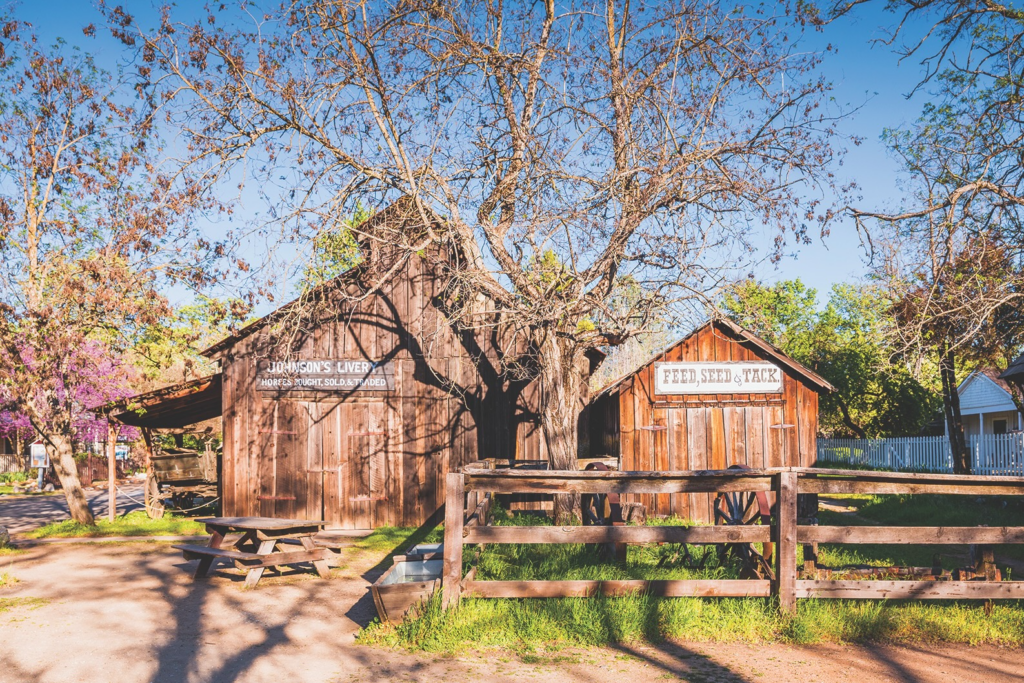
Columbia State Historic Park
Columbia, California
Courtesy California State Parks
Good Eats and Sleeps – Truckee
Eats: Old Town Tap, Truckee; Burger Me, Truckee; Le Bistro Tahoe, Incline Village; Wild Pine, Truckee; Pianeta, Truckee; Trokay, Truckee; Christy Hill, Tahoe City; Truckee Tavern and Grill, Truckee; Stella, Truckee; Truckee Food Shop, Truckee
Sleeps: Truckee Donner Lodge, Truckee; Hampton Inn & Suites Tahoe-Truckee, PlumpJack Inn, Olympic Valley; SpringHill Suites,
Truckee, Truckee; Cedar Glen Lodge, Tahoe Vista; Best Western Plus Truckee-Tahoe Hotel, Truckee; Donner Lake Inn Bed and Breakfast, Truckee
Good Eats and Sleeps – Sacramento
Eats: Kau Kau, East Sacramento; Sumer Nights, Sacramento; Casa East Sac, East Sacramento; The Rind, Midtown Sacramento; The Butterscotch Den, Sacramento; Fieldwork Brewing Company, Midtown Sacramento; La Trattoria Bohemia, East Sacramento; Jang Su Korean, Sacramento; Mezcal Grill, Sacramento; Allora, East Sacramento; The Firehouse Restaurant, Sacramento; Maydoon, Midtown Sacramento
Sleeps: Residence Inn by Marriott Sacramento Downtown at Capitol Park, Sacramento; Amber House Inn of Midtown, Sacramento; Kimpton Sawyer Hotel, Sacramento; Hyatt Regency, Sacramento; Embassy Suites by Hilton Sacramento Riverfront Promenade, Sacramento; Parkside Inn & Spa, Sacramento; Sheraton Grand Sacramento Hotel, Sacramento; The Citizen Hotel, Autograph Collection, Sacramento; Courtyard by Marriott Sacramento Midtown, Midtown Sacramento


